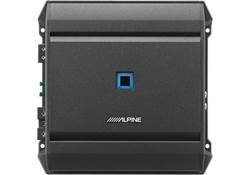

The first is whether speakers are coaxial, which means they are full-range speakers. Apart from aspects like brand names and material quality, there are a few other ways to get a good idea of sound quality. It can difficult to assess whether a speaker sounds good without actually hearing it. So, try and make sure you accurately match the two in order to prevent blown components. A basic rule to remember: It’s always better to under-power rather than overpower your speakers.
ALPINE S S65C VS JBL X600C FULL
Speakers with a higher RMS (100 watts or above) will require an extra amplifier to reach their full potential.

Speakers with a low RMS rating will generally work well with a standard low-powered car stereo. As a quick example, a speaker with an RMS rating of 30 watts and a peak rating of 60 watts means the speaker can run comfortably at a continuous 30watts, with occasional peaks of 60 watts. Typically, the RMS rating is far lower than the peak rating but gives a far more accurate representation of the speaker’s capabilities. The peak power rating is how much it can handle in short, quick bursts.

RMS, or root mean square, refers to how much continuous power a speaker can handle. Speaker companies can often mislead you with power ratings, showing either the combined speaker power rating without clearly stating it or only the peak rating. Volume can also depend on your amplifier, how you’ve wired your speakers, and of course, the speaker quality.Īnother factor to consider is peak vs. While it is true that a 100-watt speaker will generally be louder than a 30-watt speaker, several other factors come in to play. However, this is not necessarily accurate. It’s a commonly held idea that more watts equal more power. We looked at the 10 best options for 6.5-inch speakers to help you wade through the confusing array of specifications and find the right speaker for your unique needs. This is where the clarity and vocals come through, all made possible by the humble 6.5-inch middle-range speaker. The middle frequencies of the audio spectrum are where most of the magic happens. This is one of the most important component decisions you’ll make regarding audio quality inside your car. The right set of component speakers, set up and tweaked correctly, will make your car’s audio go from adequate to impressive. Spending hours in bumper-to-bumper traffic can swiftly be turned from pain to pleasure with a good fidelity sound system. That makes the quality of your cars sound system an important investment. In fact, for many people, it may be the only time they listen to music. Driving alone in your car is arguably the best time to listen to music. That’s a ton of mileage and a ton of potential music listening time. The average American spends around 17,600 minutes a year driving.


 0 kommentar(er)
0 kommentar(er)
